#crown prince gustaf adolf of sweden
Explore tagged Tumblr posts
Text
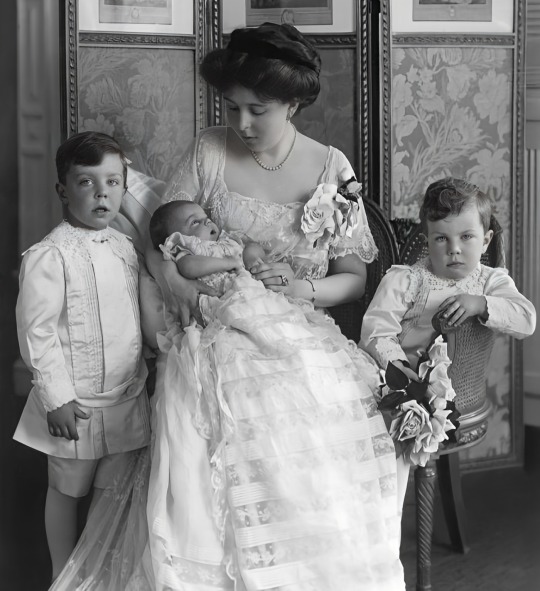
ᴀ ᴄᴜᴛᴇ ᴘʜᴏᴛᴏ sʜᴏᴡɪɴɢ ᴄʜʀɪsᴛɪᴇɴɪɴɢ ᴏғ ᴘʀɪɴᴄᴇss ɪɴɢʀɪᴅ ᴏғ sᴡᴇᴅᴇɴ, 𝟻ᴛʜ ᴍᴀʏ 𝟷𝟿𝟷𝟶. ʜᴇʀ ᴍᴏᴛʜᴇʀ, ᴘʀɪɴᴄᴇss ᴍᴀʀɢᴀʀᴇᴛ ᴏғ ᴄᴏɴɴᴀᴜɢʜᴛ, ʜᴏʟᴅs ʟɪᴛᴛʟᴇ ɪɴɢʀɪᴅ ᴡʜɪʟᴇ ʜᴇʀ ʙʀᴏᴛʜᴇʀs, ᴘʀɪɴᴄᴇ ɢᴜsᴛᴀғ ᴀᴅᴏʟғ, ᴅᴜᴋᴇ ᴏғ ᴠäsᴛᴇʀʙᴏᴛᴛᴇɴ ᴀɴᴅ ᴘʀɪɴᴄᴇ sɪɢᴠᴀʀᴅ ᴀʀᴇ ʙʏ ᴛʜᴇɪʀ sɪᴅᴇ.
𝙶𝚞𝚜𝚝𝚊𝚏 𝙰𝚍𝚘𝚕𝚏 𝚒𝚜 𝚏𝚊𝚝𝚑𝚎𝚛 𝚘𝚏 𝚝𝚑𝚎 𝚌𝚞𝚛𝚛𝚎𝚗𝚝 𝚂𝚠𝚎𝚍𝚒𝚜𝚑 𝙺𝚒𝚗𝚐 𝙲𝚊𝚛𝚕 𝚇𝚅𝙸 𝙶𝚞𝚜𝚝𝚊𝚏, 𝚠𝚑𝚒𝚕𝚎 𝙸𝚗𝚐𝚛𝚒𝚍 𝚒𝚜 𝚖𝚘𝚝𝚑𝚎𝚛 𝚘𝚏 𝚝𝚑𝚎 𝚌𝚞𝚛𝚛𝚎𝚗𝚝 𝙳𝚊𝚗𝚒𝚜𝚑 𝚀𝚞𝚎𝚎𝚗 (𝚞𝚗𝚝𝚒𝚕 𝟷𝟺𝚝𝚑 𝙹𝚊𝚗𝚞𝚊𝚛𝚢) 𝙼𝚊𝚛𝚐𝚛𝚎𝚝𝚑𝚎 𝙸𝙸 𝚊𝚗𝚍 𝙰𝚗𝚗𝚎-𝙼𝚊𝚛𝚒𝚎, 𝚏𝚘𝚛𝚖𝚎𝚛 𝚀𝚞𝚎𝚎𝚗 𝚘𝚏 𝙶𝚛𝚎𝚎𝚌𝚎. 𝚃𝚑𝚊𝚝 𝚖𝚊𝚔𝚎𝚜 𝚂𝚌𝚊𝚗𝚍𝚒𝚗𝚊𝚟𝚒𝚊𝚗 𝚛𝚞𝚕𝚎𝚛𝚜 𝟷𝚜𝚝 𝚌𝚘𝚞𝚜𝚒𝚗𝚜!
~~~˚ʚ♡ɞ˚~~~
~~~𓆩♡𓆪~~~
#princess ingrid of sweden#queen ingrid of denmark#prince gustaf adolf#prince sigvard#princess margaret of connaught#crown princess margaret of sweden#king carl xvi gustaf#queen margrethe ii#14th january 2024 ;(#swedish royal family#danish royal family#drf#swrf#bernadotte#house of bernadotte#glücksburg#house of glücksburg#queen anne-marie of greece#queen anne-marie
52 notes
·
View notes
Text

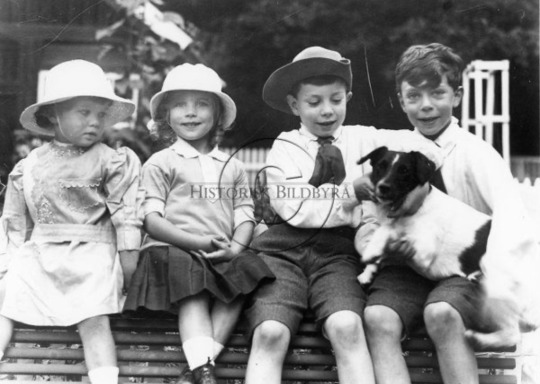
The Four Eldest Children of King Gustaf VI Adolf of Sweden and Princess Margaret of Connaught 🤍
From L to R: Bertil, Ingrid, Sigvard, and Gustaf Adolf 🖤
#awwww 🥹🫶#they are so cute!!! 🙌😍#swedish royal family#bernadotte#house of bernadotte#king Gustaf vi adolf#crown princess margaret of sweden#princess Margaret of Connaught#king gustav vii adolf#Prince sigvard#prince sigvard of Sweden#Princess ingrid#princess ingrid of sweden#queen ingrid of denmark#queen ingrid#prince bertil#prince Bertil of Sweden#early 1900s
11 notes
·
View notes
Text
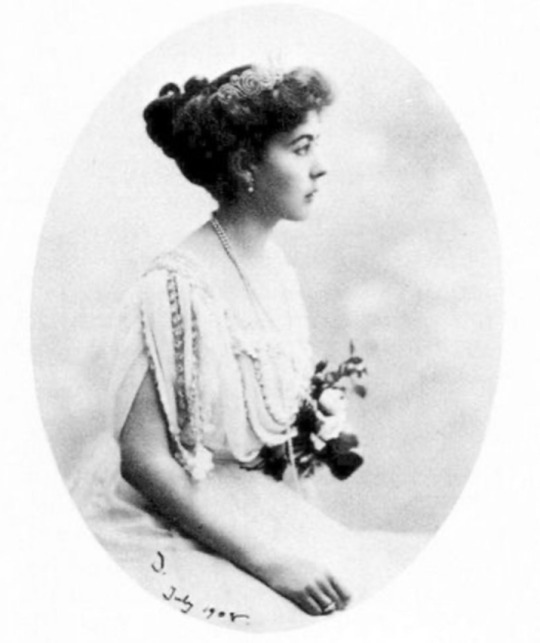


BORN ON THIS DAY:
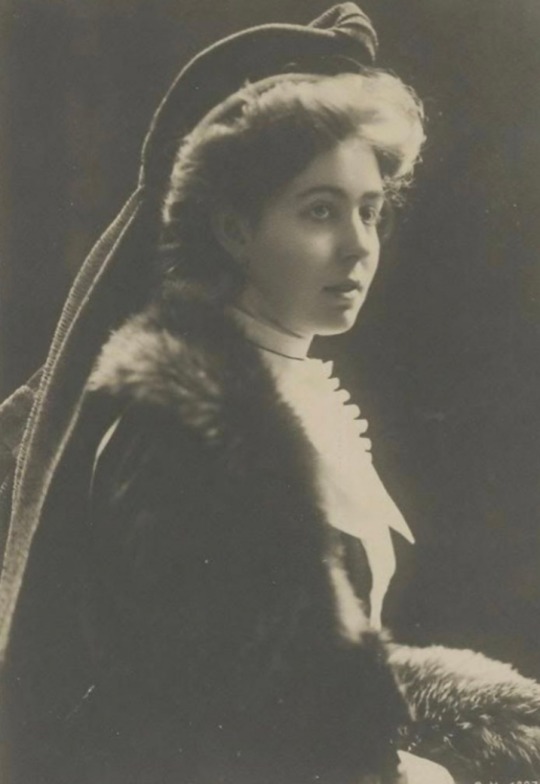
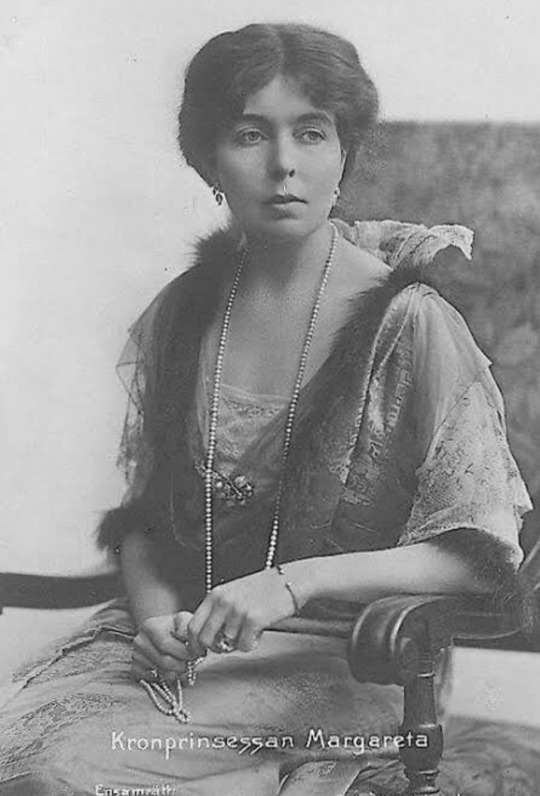
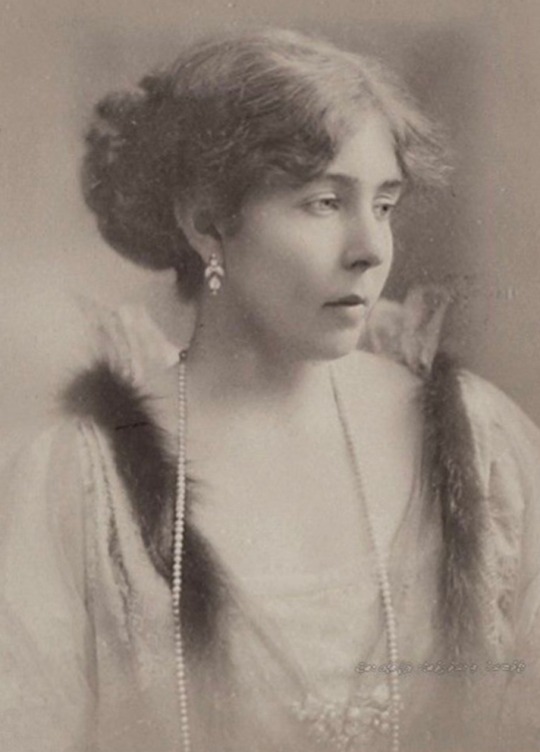
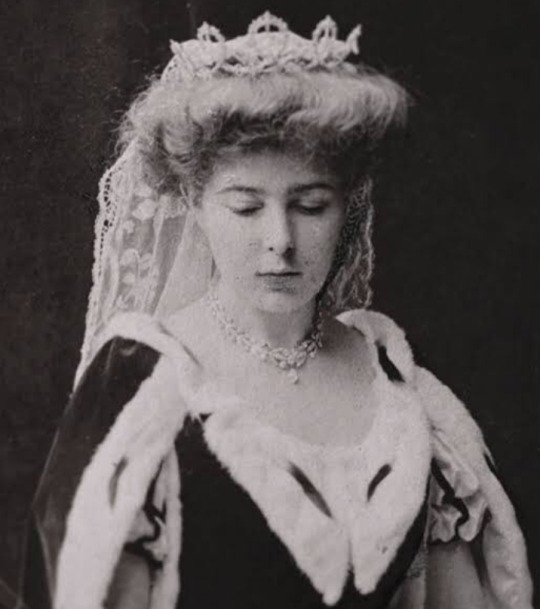
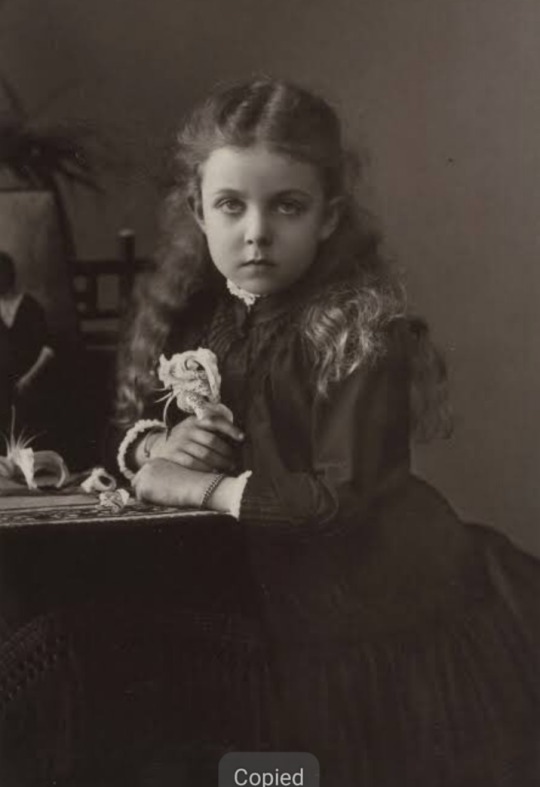
Princess Margaret of Connaught (Margaret Victoria Charlotte Augusta Norah; 15 January 1882 – 1 May 1920) was Crown Princess of Sweden as the first wife of the future King Gustaf VI Adolf.
She was the elder daughter of Prince Arthur, Duke of Connaught, third son of Queen Victoria of the United Kingdom and his wife, Princess Louise Margaret of Prussia.
Known in Sweden as Margareta, her marriage produced five children.
She was the grandmother of King Carl XVI Gustaf of Sweden, Queen Margrethe II of Denmark, and Queen Anne-Marie of Greece.
She died 30 years before her husband's accession to the throne of Sweden.
#Princess Margaret of Connaught#Crown Princess of Sweden#King Gustaf VI Adolf#Prince Arthur#Duke of Connaught#Queen Victoria#Princess Louise Margaret of Prussia#King Carl XVI Gustaf of Sweden#Queen Margrethe II of Denmark#Queen Anne-Marie of Greece#Swedish Royal Family#British Royal Family#Sweden#United Kingdom
0 notes
Text
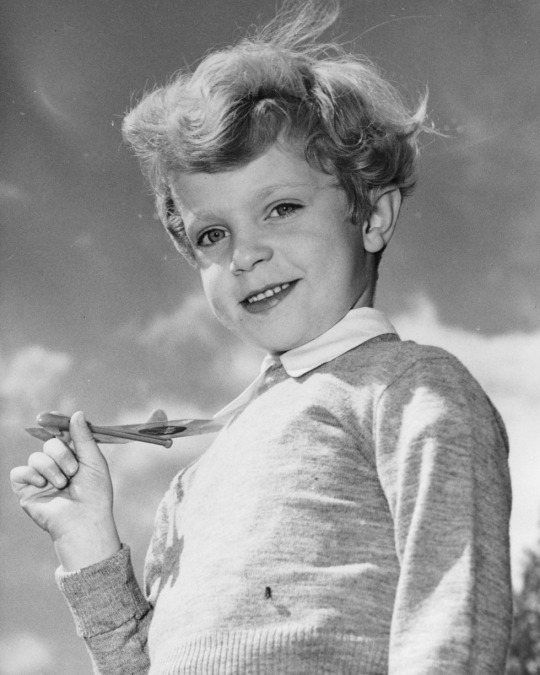
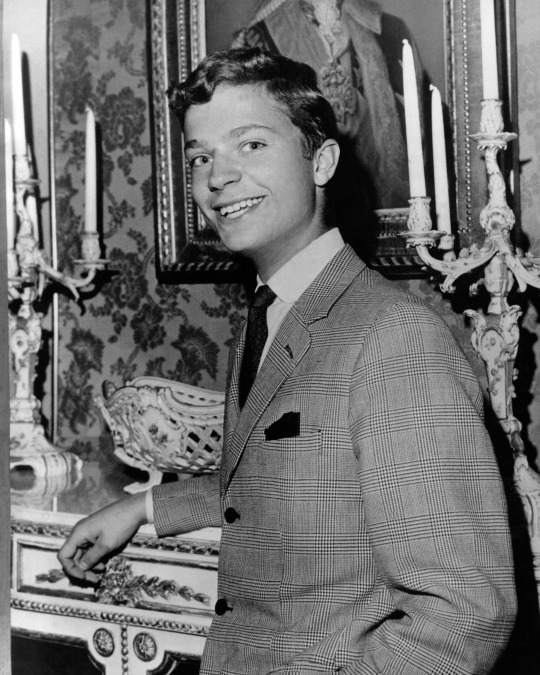
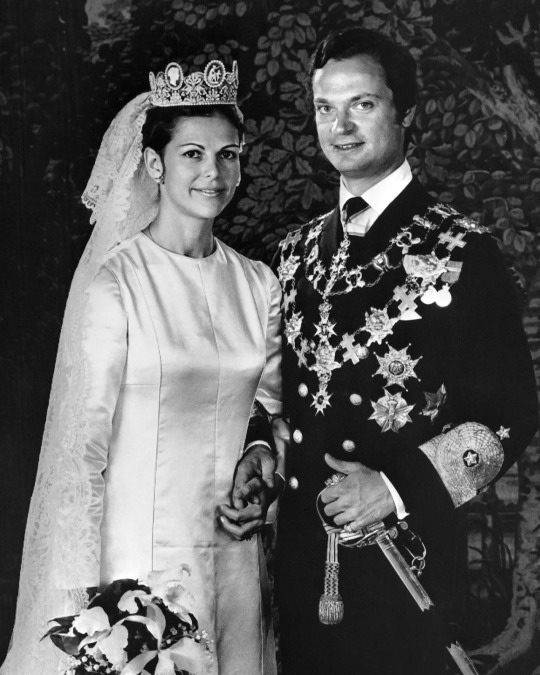

Happy 78th birthday to King Carl XVI Gustaf!
Born on April 30th 1946, Carl Gustaf Folke Hubertus acceded to the throne of Sweden upon the death of his grandfather, Gustaf VI Adolf, on 15 September 1973.
Carl XVI Gustaf became Sweden's crown prince and heir apparent to the throne at the age of four following his great-grandfather's death. Carl Gustaf's father, Prince Gustaf Adolf, died in a plane crash in 1947 when Carl Gustaf was only nine month old. He is the longest-reigning monarch in Swedish history, having surpassed King Magnus IV's reign of 44 years and 222 days on 26 April 2018.
He married Silvia Sommerlath on 19 June 1976 and they have three children: Crown Princess Victoria, Duchess of Vastergotland, Prince Carl Philip, Duke of Varmland and Princess Madeleine, Duchess of Hälsingland and Gästrikland.
29 notes
·
View notes
Text

Princess Margaret Victoria Charlotte Augusta Norah of Connaught, Crown Princess of Sweden, Duchess of Scania and Prince Oscar Fredrik Wilhelm Olaf Gustaf Adolf, later King Gustaf VI Adolf of Sweden and their children: Prince Gustaf Adolf Oscar Fredrik Arthur Edmund, Duke of Västerbotten Prince Sigvard Oscar Fredrik Bernadotte, Count of Wisborg Princess Ingrid Victoria Sofia Louisa Margareta of Sweden, later Queen consort of Denmark Prince Bertil Gustaf Oskar Carl Eugén, Duke of Halland
British vintage postcard
#postal#oscar#gustaf vi adolf#sigvard#queen#margaret#augusta#bernadotte#bertil#sigvard oscar fredrik bernadotte#oskar#halland british#historic#ansichtskarte#norah#later#consort#ingrid#sepia#connaught#vintage#wilhelm#tarjeta#wisborg princess#eugn#gustaf#fredrik wilhelm olaf gustaf adolf#arthur#ingrid victoria sofia#princess
6 notes
·
View notes
Text

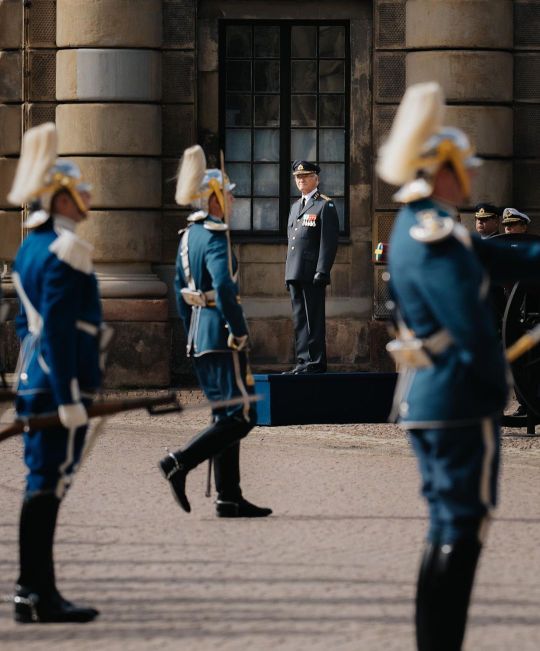
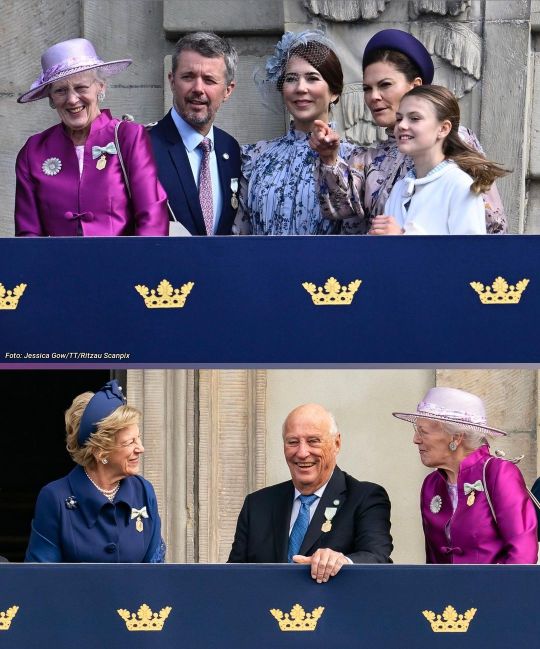

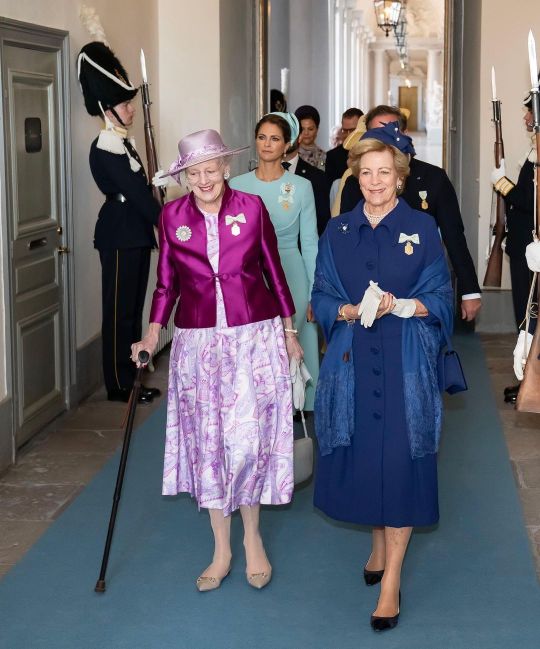
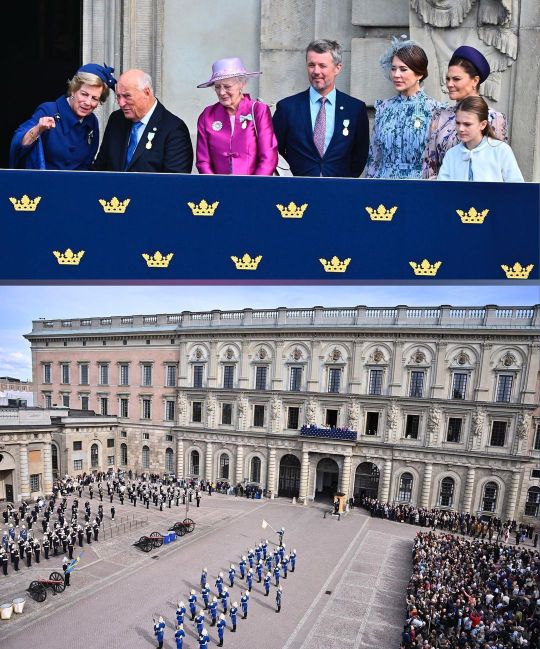
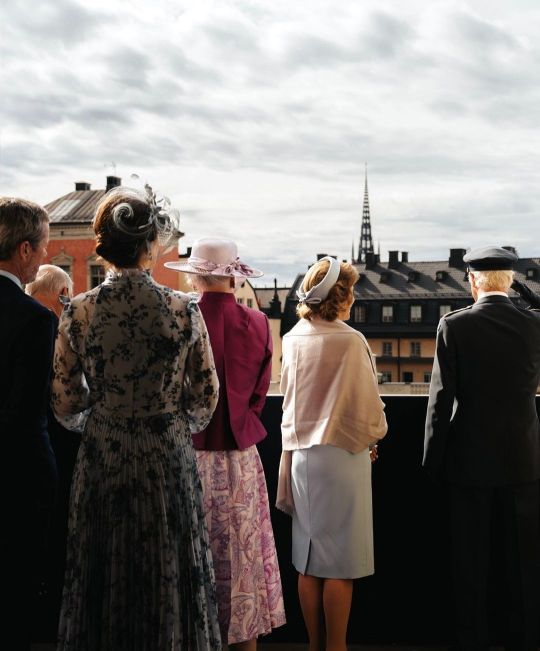


Today His Majesty King Carl XVI Gustaf of Sweden can celebrate 50 years on the throne.
Her Majesty the Queen, the Crown Prince Couple and Her Majesty Queen Anne-Marie are in Stockholm to participate in the anniversary celebrations.
Their Majesties and Their Royal Highnesses together with the Swedish royal family visited this morning King Gustaf VI Adolf of Sweden's grave in Hagaparken. The former Swedish king was the grandfather of King Carl Gustaf and maternal grandfather of the Queen, Princess Benedikte and Queen Anne-Marie.
Then followed a thanksgiving service, Te Deum, in the Royal Church of Stockholm Palace, followed by the changing of the guard and a song tribute in the palace courtyard, where the jubilee, the Nordic heads of state and the other royals appeared on the balcony.
📷 Detdanskekongehus vía instagram
67 notes
·
View notes
Text
on this day in 1956
European Royalty in Stockholm
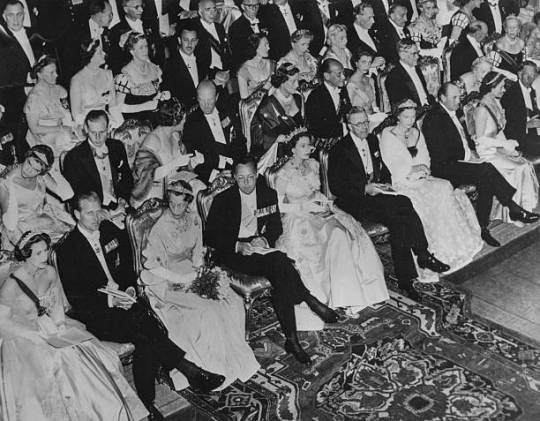
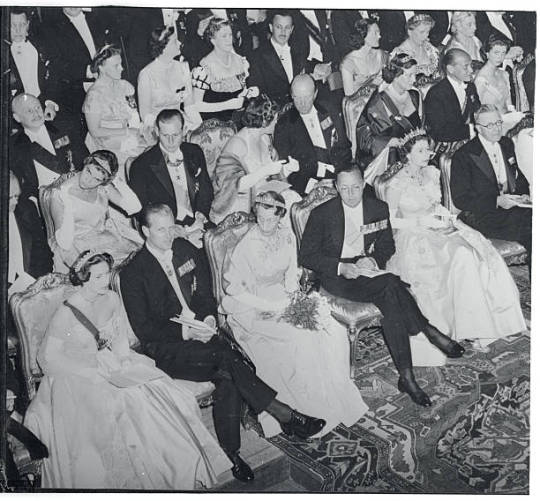
Royal figures of Europe sit together in the front row of the audience of a festival performance; Princess Margaret, Prince Philip, Duke of Edinburgh, Queen Consort Louise Mountbatten, Prince Bernhard of the Netherlands, Queen Elizabeth II, King Gustaf VI Adolf of Sweden, Princess Josephine Charlotte of Belgium, Crown Prince Olav of Norway and Prince Wilhelm of Sweden and Norway, at the Drottningholm Palace Theatre in Stockholm, Sweden, June 15th 1956.
58 notes
·
View notes
Note
Who do you think are the 3 most beautiful granddaughters of Queen Victoria?
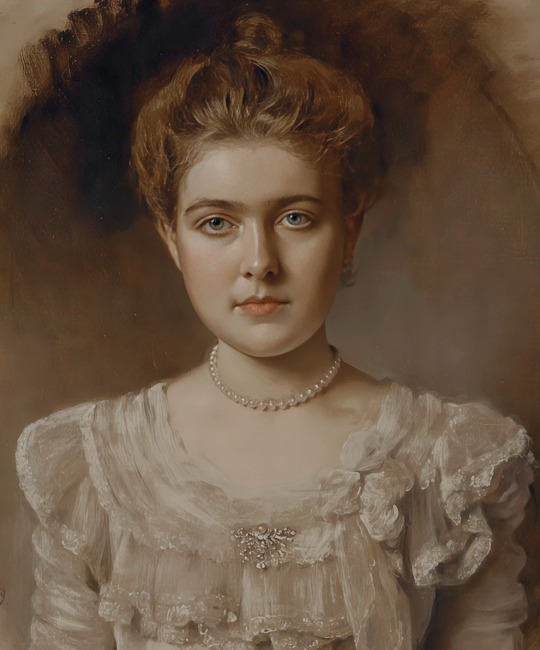
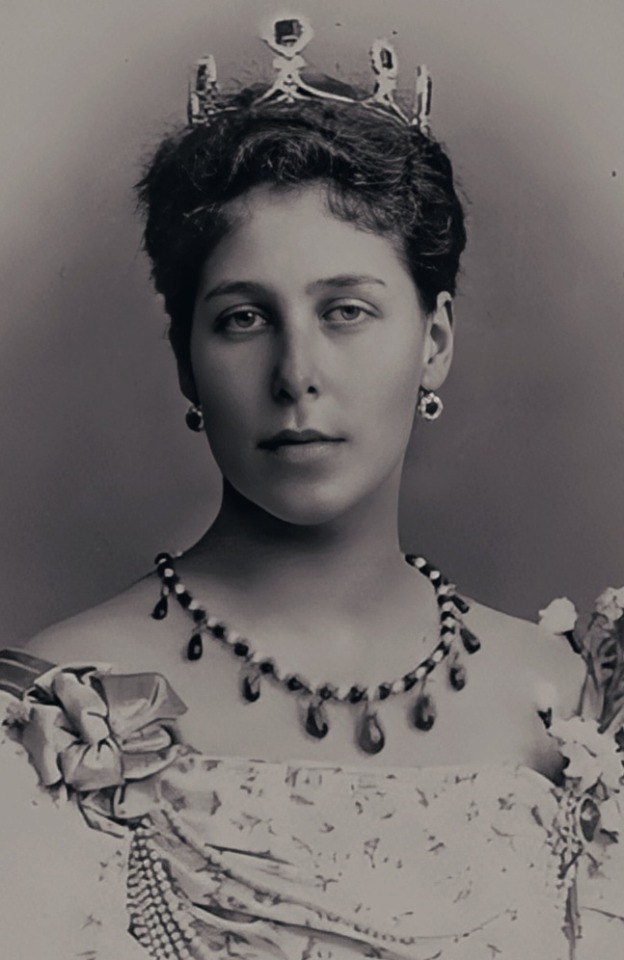
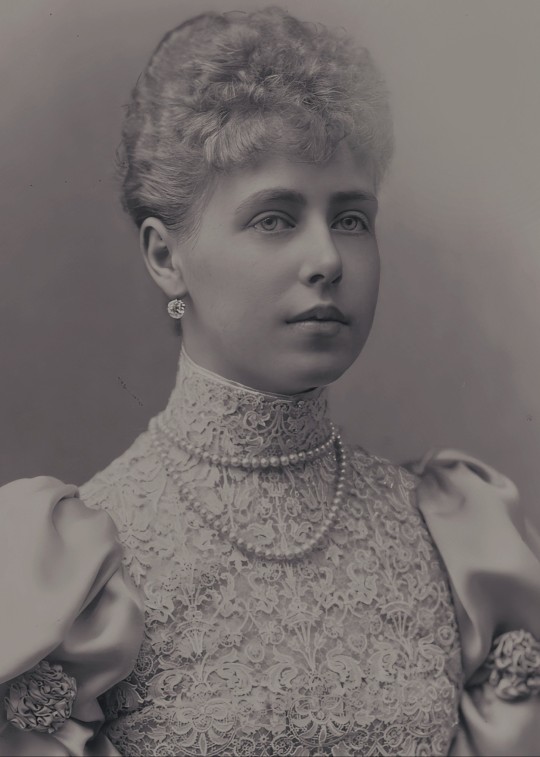
Beauty is a subjective matter, and different people may have different preferences and tastes.
I'm sure that all the granddaughters of Queen Victoria are beautiful and unique in their own way... 💓🫶🥺 However, in my opinion, 3 of the most beautiful granddaughters of Queen Victoria are included:
- Princess Margaret of Connaught (1882–1920) was the daughter of Prince Arthur, Duke of Connaught and Strathearn, the third son of Queen Victoria and Prince Albert. She married Prince Gustaf Adolf of Sweden, the future King Gustaf VI Adolf, in 1905 and became the Crown Princess of Sweden. She was known for her beauty, intelligence, and charm, and was popular among the Swedish people. She died in 1920, at the age of 38.
- Princess Victoria Melita of Edinburgh (1876–1936) was the daughter of Prince Alfred, Duke of Edinburgh and Saxe-Coburg and Gotha, the second son of Queen Victoria and Prince Albert. She married twice: first to her cousin Ernest Louis, Grand Duke of Hesse; and second to another cousin Kirill Vladimirovich, Grand Duke of Russia. She was considered a beauty in her youth, with dark hair and blue eyes. She was also interested in music and art, and supported her husband's claim to the Russian throne after the revolution.
- Princess Marie of Edinburgh (1875–1938) was the daughter of Prince Alfred, Duke of Saxe-Coburg and Gotha. She married King Ferdinand I of Romania in 1893. She was admired for her beauty, elegance, and style, and was nicknamed "the pearl of the crown" by the Romanian people. She was also a patron of arts and culture, and a humanitarian who helped refugees.
23 notes
·
View notes
Photo
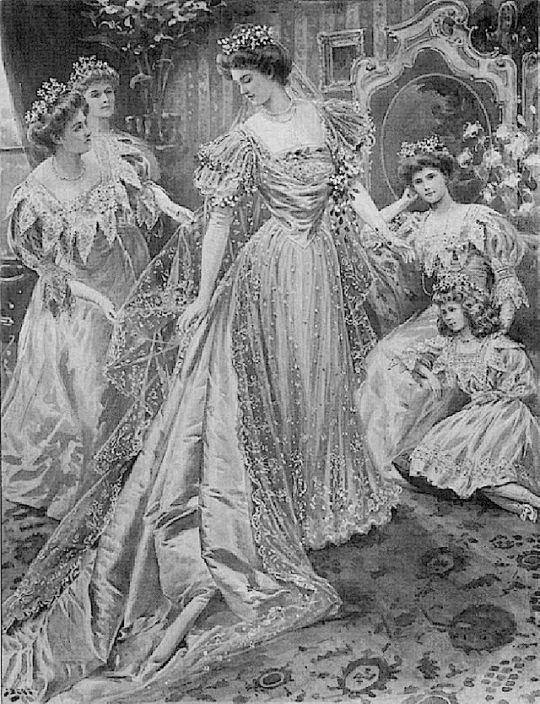
✵ June 15, 1905 ✵
Princess Margaret of Connaught & Prince Gustaf Adolf, Crown Prince of Sweden
#great britain#british royal family#British royal wedding#sweden#Swedish Royal Wedding#swedish royal family#Swedish Royalty#Royal Wedding
23 notes
·
View notes
Text
Royal Wedding on 15 October 1913 at the Chapel Royal, St. James' Palace, London (part 2).
The beautiful bride

The bridal couple with the bridesmaids


The bride's attendants were:
Princess Maud, the bride's sister.
Princess Mary of the United Kingdom, the bride's maternal first cousin and daughter of King George V.
Princess Mary of Teck and Princess Helena of Teck, daughters of Prince Adolphus, Duke of Teck (brother of Queen Mary).
Princess May of Teck, the bride's maternal second cousin and daughter of Prince Alexander of Teck (brother of Queen Mary) and Princess Alice of Albany.
Photographs of wedding guests and bridesmaids outside a house in Portland Square, taken after the wedding.


The happy couple waving at the crowd.


After the wedding



Source: Most of the photos are from the Royal Collection Trust.
#prince arthur of connaught#princess alexandra of fife#princess alice of teck#prince alexander of teck#queen mary of the united kingdom#louise princess royal#princess maud of fife#princess victoria of wales#prince rupert of teck#princess may of teck#princess mary of teck#princess helena of teck#queen alexandra of the united kingdom#princess helena victoria of schleswig-holstein-sonderburg-augustenburg#king george v of the united kingdom#princess henry of teck#prince arthur duke of connaught and strathearn#duchess louise margaret of connaught#princess patricia of connaught#crown prince gustaf adolf of sweden#crown princess margaret of sweden#royal weddings#1913#1910s#british royal fandom#british royal family
37 notes
·
View notes
Text
Subtext and Culture, Young Royals, Heir today, gone tomorrow?
I've read a lot of theories and speculation about what the ending of the show means, the Revolution song, and what Wilhelm (and Simon) should and should not do in the next season, and it's pretty clear that a lot of you don't really know how a monarchy works, so the point of this post is to go over the actual options and possibilities for Wilhelm with regards to being crown prince and not straight.
Sweden is a constitutional monarchy, which means that the rules of the monarchy are governed by law, by the constitution. Some constitutional monarchies like The Vatican or Malaysia are elective monarchies where each successive monarch is elected somehow. However, Sweden, like all other European monarchies, is a hereditary monarchy, which means that when the current monarch dies or abdicates, the crown passes to the next-in-line heir. Because Sweden is a kingdom, the title of this person is Crown Prince or Crown Princess.
All hereditary monarchies are typically anchored at some ancestor, and the constitution then says that the title of monarch belongs to this person's heirs. For example, in the United Kingdom, its Act of Settlement of 1701 anchored their line of succession on Sophia of Hanover, and since she lived quite long ago, she has thousands of heirs, and all of them are actually in line for the British throne.
In the early 1800's, Swedish king Gustaf IV Adolf sided against France and Russia in the Napoleonic wars, which led to Sweden losing wars and eventually losing the entire eastern half of Sweden, also known as Finland. The king got so unpopular that he was deposed by the nobility and parliament, and the crown went to his uncle, Karl XIII. However, he was childless, so Sweden was now without an heir to the throne.
Through politics and shenanigans and the wish for a strong military leader, parliament finally selected some random dude: Jean Baptiste Bernadotte, a marshal in the French army who had been made prince of Ponte Corvo by Napoleon. The king formally adopted him as his son, and the constitution was changed with the introduction of the 1810 Act of Succession that anchored the Swedish throne to this newly formed House Bernadotte and its male heirs.
Another point that is important to understand is that the monarch of Sweden has no say over the constitution, it is in the hands of parliament, and ultimately, the people of Sweden. And in 1979 Sweden changed its constitution, moving from male-preference primogeniture to absolute primogeniture, stripping the second-born (but first-born son) Prince Carl Philip of his title as crown prince, and giving it to his older sister, now Crown Princess Victoria. Note that this was done even though the king was completely against it, because the monarch doesn't make the rules of the monarchy.
When this change was made, Sweden also re-anchored the order of succession on Carl XVI Gustaf in order to remove the claims of female heirs who were previously passed over, and today the line of succession only contains eleven people: His three children and his eight grand-children.
So what are the rules for getting into and staying in the line of succession?
You have to be an heir to the ancestor it's anchored on. (§1)
You have to be mainline protestant. (§4)
You have to get the consent of both the government and the monarch to marry. (§5)
You can't inherit or be elected as head of state in any other country. (§8)
Those are all the rules according to the text of the constitution. Note that the text uses the Swedish term bröstarvinge in the preamble and efterkommande in the actual law. Bröstarvinge is a legal term which is defined in inheritance law as your biological and adopted children, and efterkommande just means descendant and is not strictly defined. Nowhere in the text does it say that heirs have to be born in wedlock! Or that the monarch has to marry someone of the opposite sex! Or that the monarch even has to be married!
Since the law was written in 1810, the spirit of the law is obviously that princes and princesses of Sweden should marry someone of the opposite sex and have trueborn noble children like good little heterosexual monogamous Christians, and certainly not be in a scandalous same-sex relationship, or father bastards, or adopt children.
But the letter of the law allows it. 😈
So one possible future for Wilhelm is that he marries Simon with consent from the Queen, has kids either through insemination, or surrogacy, or an affair, or some polyamorous throuple, or adoption or whatever, and those kids would be legal heirs to the throne, thus securing the monarchy for another generation. Might make for some funny family photos with King Wilhelm I, his husband Prince Simon, their children, and miss Fredrika, Mother of the Royal Children or something. Or maybe you have to make her a princess at least? I don't know!
I'm not saying this future is without problems, there are definitely people who would oppose it strongly for homophobic reasons, it would trigger a constitutional crisis and national debate on if this is the way the monarchy should and could go, and anti-monarchists would of course seize the opportunity to argue for scrapping the whole thing.
Another possible future for Wilhelm is that he renounces his position in the line of succession, because you can always decline. You can always say no to your royal duty, but doing so means you lose your titles and your royal privileges. If the succession is anchored on Kristina, this would leave Sweden without an heir, also triggering a constitutional crisis that might end the monarchy. Or, in this scenario, you could also allow for searching for an heir among the extended family, making any cousins or second cousins eligible to inherit the throne. For example August. (That would make some lovely season 2 drama!)
A boring possible future is that everyone completely ignores the problem. Wilhelm and Simon keep having a relationship in secret, Wilhelm ascends the throne and just... never marries or has children. Maintaining the image of being straight, while the open secret that he's in a relationship with a guy is never publicly confirmed or addressed, which just kicks the constitutional crisis can down the road a couple of decades.
A fourth possible future is that Wilhelm's coming out immediately triggers a constitutional crisis, and the people of Sweden simply say fuck it and decide to abolish the monarchy. Wilhelm will never be king, Simon will never be prince, but at least they would be completely free to live their lives as they want.
Note that Wilhelm's options are actually pretty limited. Neither he nor his mother the Queen have any power to alter the rules of succession. It all comes down to whether or not parliament, and ultimately the people, accept Wilhelm as he is.
Also note that actual revolution is not really a possible future, no matter how catchy the soundtrack is. Why would the people of Sweden violently overthrow the government because Wilhelm comes out? Every possible future results in a constitutional crisis though, Wilhelm isn't wrong in episode 6 when he asks Simon if he understands what kind of a shitstorm him coming out would result in, because that is the only thing that is certain to happen. And I really hope we get a season 2 and that these scenarios are explored there!
Addendum: Had a great discussion with @waybeforeyourtime in the comments and she pointed out that the word äkta - legitimate - actually appears in the preamble. This is true, but the very long and very flowery and extremely run-on legalese sentence it is part of goes something like this: (heavily paraphrased)
"We, the parliament who are gathered here today, are writing this act of succession for the benefit of the legitimate male heirs of Johan Baptist Julius, Prince of Ponte Corvo, and here are the rules:"
...and then they start listing the paragraphs of the actual law. But they never mention "legitimate" again. The original first paragraph only talks about "heirs" and "sons", and the 1979 version only talks about "male and female descendants".
So it was absolutely the intent of the original lawmakers that only legitimate male heirs conceived in wedlock were meant to inherit, but they didn't actually write it down in the law itself! Maybe if they'd spent less time writing about the "life-fruit" of queens in "delicate condition" - the original second paragraph is a hoot! - they could have spent some time specifying that heirs had to be legitimate, but they didn't!
The letter of the law says one thing, the spirit of the law says another thing, so you can argue the case either way. In the end though, the only thing that matters is what parliament and the people want.
Addendum 2: Following the announcement by the Dutch government that they were cool with a royal same-sex marriage in the Netherlands, the Swedish Royal Court also made a statement saying they're cool with it as well, and that the currently nine-year old Princess Estelle, and all her siblings and cousins, can marry someone of the same sex in the future without losing their place in the line of succession.
The Marshal of the Realm made the exact same argument I made; the text of the constitution doesn't forbid it, the only requirement is that the monarch and the government approves of the marriage.
The question of a legitimate heir in that case is not resolved, but I would assume that Sweden and the Netherlands, and any other European monarchies that follow, would deal with that problem on a case-by-case basis and only if it becomes pertinent.
348 notes
·
View notes
Text

Cute candid of Crown Princess Margaret of Sweden (née Princess of Connaught) with her 5 children, 1917 🤍
From left to right: Prince Sigvard, Prince Bertil, CP Margaret holding Prince Carl Johann, Princess Ingrid, Prince Gustaf Adolf 🖤
#this is so cute!!!#🤍🤍🤍#swedish royal family#crown princess margaret of sweden#princess Margaret of Connaught#Margaret of Connaught#Prince Gustaf adolf#Duke of västerbotten#prince sigvard#Duke of uppland#princess Ingrid of sweden#queen ingrid#queen ingrid of denmark#prince bertil#Duke of halland#Prince Carl johann#Duke of dalarna#1917#house of bernadotte
12 notes
·
View notes
Text
Crown Princess Victoria’s speech during a visit to Norrtälje, 29th March 2022
“Today is the 29th of March - exactly 400 years since Norrtälje received its city privileges from King Gustaf II Adolf. It's an anniversary worth celebrating properly! When another king was visiting here 123 years ago, my great-great-great-grandfather Oscar II, he gave a speech. In it, he regretted that he had not had the opportunity to visit the city before. Because he could see that Norrtälje was an unusually beautiful city. And having done a tour myself earlier today, I can only agree with my ancestor's judgment!
Norrtälje has been through a lot during its 400 years. Today, when we see and hear about cities being destroyed, we are reminded that similar tragedies have occurred here, in our country. In 1719, Norrtälje was burned to the ground. But the city was rebuilt. Slowly but surely, it grew, and eventually became important for the whole of Sweden. What has been laid in ruins can be recreated and begin to flourish again - that thought gives us hope.
Almost a year ago, Prince Daniel and I had the opportunity to talk to the chairman of the municipal board here in Norrtälje. At that time we heard about how the municipality worked to alleviate the effects of the pandemic. Now, due to the war in Ukraine, millions of people are fleeing. It's time again to mobilize resources, to think creatively and to make some sacrifices. Here in Norrtälje, the project "Norrtälje Helps" has been restarted to coordinate all good initiatives in the municipality. It's amazing to see the commitment that people show, both here and in so many other places. It is a wave of humanity that rises against violence and destruction.
Norrtälje has a varied history. The business community has changed and adapted to time and conditions: from weapons manufacturing to bathing facilities, from industrial areas to garrison towns. Many are the people who in recent decades have vacationed here in your beautiful city and enjoyed Roslagen's fantastic nature. But Norrtälje is not just a holiday gem. It is also a city that has started to grow again. People want to live here. And it's not hard to understand why!
Over the centuries, Norrtälje has shown an impressive ability to change. It is a strength for your city - yesterday, today and in the future! Dear Norrtälje residents, a big, big congratulations on the 400th anniversary!”
9 notes
·
View notes
Text
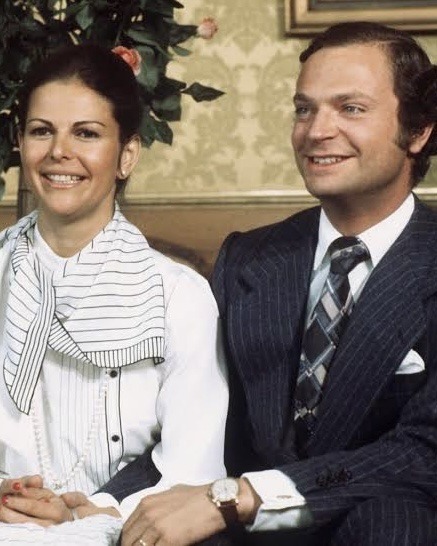
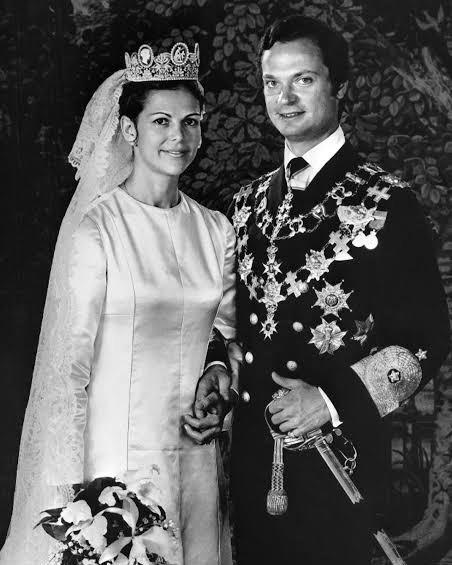
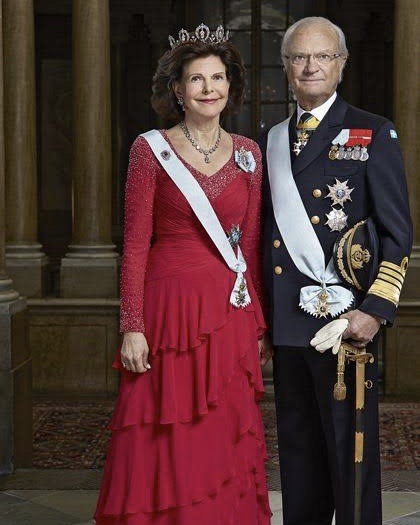
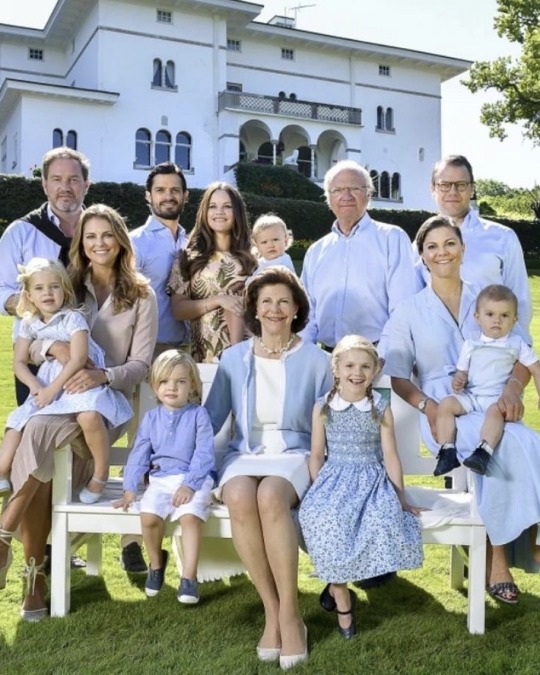
Happy 47th wedding anniversary to King Carl XVI Gustaf and Queen Silvia of Sweden!
The couple tied the knot on June 19 1976 at the Stockholm Cathedral, having met 4 years prior at the 1972 Summer Olympics in Munich; Silvia was assigned to be Carl Gustaf's translator during the games. Carl Gustaf acceded to the throne in the following year following the death of his grandfather.
Their engagement was announced on March 12 1976; the King proposed with a 2-carat ring that belonged to his late mother. Their wedding symbolized the first marriage of a reigning Swedish monarch since King Gustav IV Adolf married Princess Frederica of Baden in 1797; and Silvia became Sweden's first queen consort since 1965.
Their chosen date of June 19 is a symbolic date for the Bernadotte family and one in which multiple family members have gotten married on, including Carl Gustaf and Sofia's eldest daughter, Crown Princess Victoria.
They have three children and eight grandchildren: Crown Princess Victoria, Duchess of Västergötland (45), mother of Princess Estelle (11) and Prince Oscar (7); Prince Carl Philip, Duke of Värmland (44), father of Prince Alexander (7), Prince Gabriel (5) and Prince Julian (2); and Princess Madeleine, Duchess of Hälsingland and Gästrikland, (41), mother of Princess Leonore (9), Prince Nicolas (8) and Princess Adrienne (5).
30 notes
·
View notes
Photo
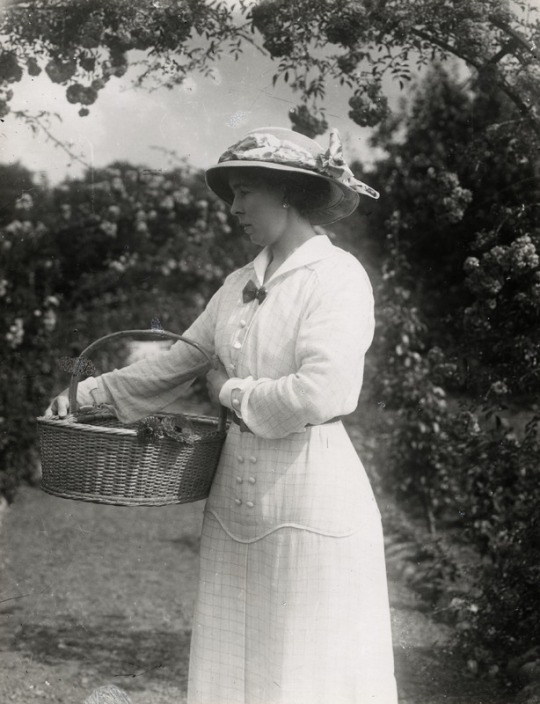
Princess Margaret Victoria Charlotte Augusta Norah of Connaught (15 January 1882 – 1 May 1920) was Crown Princess of Sweden as the first wife of the future King Gustaf VI Adolf. She was the elder daughter of Prince Arthur, Duke of Connaught, third son of Queen Victoria of the United Kingdom, and his wife Princess Louise Margaret of Prussia. Known in Sweden as Margareta, her marriage produced five children, and she is the grandmother of King Carl XVI Gustaf of Sweden and Queens Margrethe II of Denmark and Anne-Marie of Greece. She died 30 years before her husband's accession to the throne of Sweden.
#Margaret of Connaught#House Saxe-Coburg and Gotha#XIX century#XX century#people#portrait#photo#photography#Black and White
5 notes
·
View notes
Text

Leopold Charles Edward George Albert, Duke of Saxe-Coburg and Gotha Crown Prince Oscar Fredrik Wilhelm Olaf Gustaf Adolf, later King Gustaf VI Adolf of Sweden Princess Sibylle Calma Marie Alice Bathildis Feodora of Saxe-Coburg and Gotha, Duchess of Västerbotten Prince Gustaf Adolf Oscar Fredrik Arthur Edmund, Duke of Västerbotten Crown Princess Louise Alexandra Marie Irene Mountbatten, later Queen consort of Sweden Princess Viktoria Adelheid Helene Luise Marie Friederike of Schleswig-Holstein, Duchess consort of Saxe-Coburg and Gotha
Swedish vintage postcard
#calma#tarjeta#postkaart#sepia#saxe#duke#king#alexandra marie irene mountbatten#helene luise marie friederike#marie alice bathildis feodora#schleswig#swedish#oscar fredrik wilhelm#edward#schleswig-holstein#queen#coburg#gotha swedish#albert#friederike#viktoria adelheid#princess#ephemera#irene#adolf#crown#arthur#alexandra#fredrik#gotha
2 notes
·
View notes